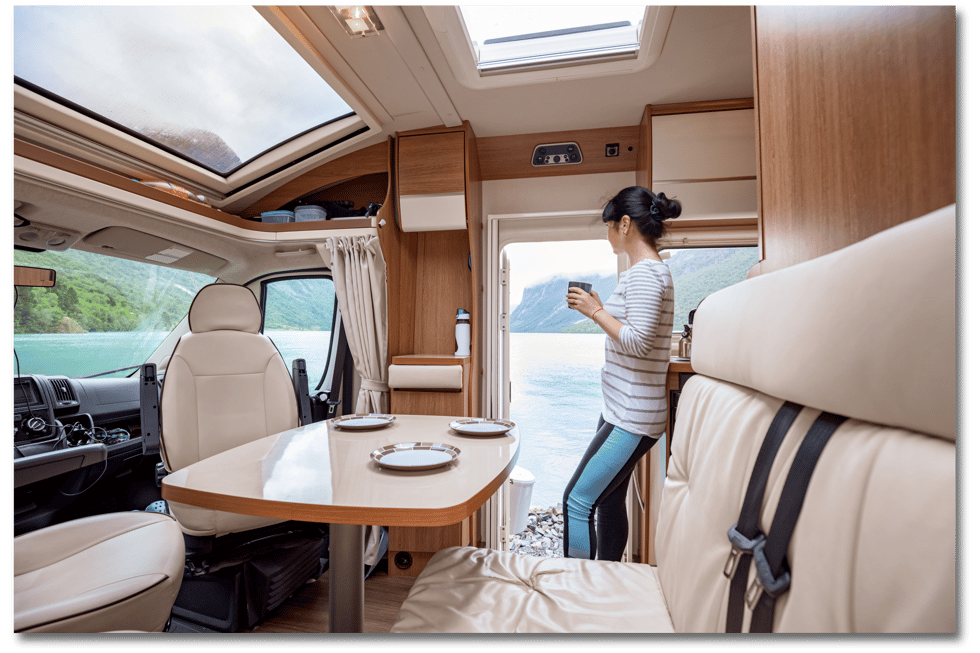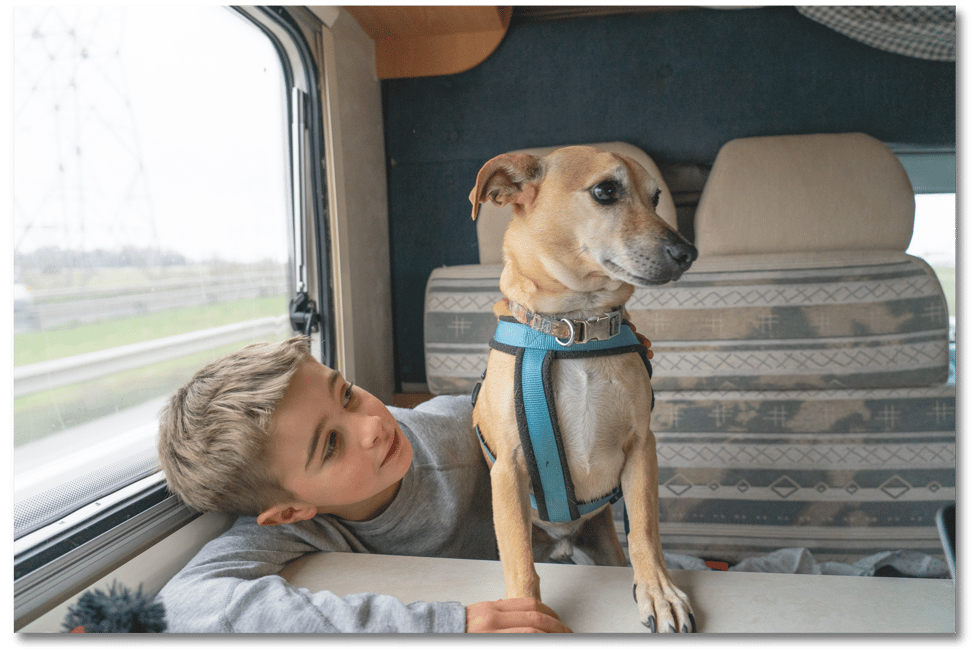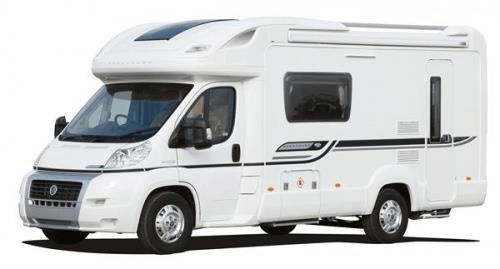When it comes to living life on the road, even the simple task of doing the washing up raises a...
In the realm of road safety, the importance of wearing seatbelts cannot be overstated. However, when it comes to motorhomes, there can be some confusion about the legal requirements regarding seatbelt usage. Below we aim to shed some light on the UK law governing the use of seatbelts in motorhomes, to ensure that both drivers and passengers are well-informed and able to take the correct action to make themselves compliant on the road.
What does the law say?
The legal framework for seatbelt use in motorhomes in the UK is generally governed by the Road Traffic Act 1991 and more specifically in The Road Vehicles (Construction & Use) Regulations 1986 (as amended). According to the legislation, all occupants travelling in a motorhome are required to wear seatbelts when they are available.
What do I need to consider?
It’s important to note that just because a manufacturer declares a certain number of berths for a particular motorhome, you must in fact not assume that this is actually the number of persons that can be carried when the vehicle is on the move, as the correct number of seatbelts may not be fitted for this.
All seatbelts fitted must be approved for use in the relevant type of vehicle and must display an approval mark - this will normally be a letter ‘E’ followed by a number, or a BS kitemark. There are a couple of things to bear in mind if you were thinking about retrofitting seatbelts to your motorhome. Some older motorhomes weren’t originally designed to include seatbelts and therefore are missing the necessary anchorage structures required. An option for older motorhomes is to install crash-rated seats with the seatbelt already pre-built into the seat, which will likely involve bolting a steel structure to the floor. Another option, for all ages of motorhome, is to have the vehicle professionally modified to include seatbelt anchorage structures.
One important point to note is that you may find yourself in breach of your insurance company’s requirements if you do not follow what the law/guidance stipulates, and therefore there could be implications in the event of any insurance claim you might make. We would suggest that, if carrying more people in your motorhome than there are seatbelts, you contact your insurer to check that you would still be covered in the event of a claim.

What type of seatbelts are needed, and does the seatbelt requirement depend on the age of my motorhome?
If your motorhome was manufactured after 2006
If your motorhome fits this category, you must identify the seats which you have designated as travel seats. Your motorhome must have seatbelts for all designated travel seats throughout the vehicle, and passengers are required to use them while the motorhome is in transit. Only the driver and the specified passenger seats require three-point seatbelts. The rest of the designated travel seats must have at least two point seatbelts. Side facing seats cannot be designated as travel seats.
If your motorhome was manufactured from the 1st of October 1988
When in this category, your motorhome must have seatbelts fitted for the driver, as well as any forward-facing passengers. These seatbelts must be worn when the motorhome is in transit. Seatbelts for the driver and designated passenger must be three-point belts. Other belts fitted in the vehicle are permitted to be two or three-point belts.
If your motorhome was manufactured before 1st October 1988
For this category of motorhome, it must have seatbelts for the driver and a designated passenger in the front. It isn’t necessarily illegal for a rear seat passenger not to wear a seatbelt, but the police could regard not wearing a seatbelt in the rear of the motorhome to be an offence if the vehicle is being driven at high speeds and/or in a manner deemed to be reckless.
What about side-facing seats?
The use of side-facing seats whilst the motorhome is in motion is not recommended, as it has been found they may increase the risk of injury during a front collision. It’s not illegal to sit in them (either those with or without fitted seatbelts) but it’s not recommended by the UK government to use side-facing seats in the rear whilst the motorhome is being driven, and as we said above they cannot be used as designated travel seats.
Certainly, the use of seatbelts in side facing seats could increase the risk of injury in the event of a front collision.
What are the driver’s responsibilities?
Motorhome drivers have a crucial role in ensuring the safety of their passengers. The driver is not only responsible for wearing their own seatbelt but also for ensuring that all passengers, including those in the living area of the motorhome, are securely belted in. As the driver of a motorhome, ultimately it is your responsibility to ensure that your vehicle is safe for all passengers before you begin a journey. Remember - any passengers not restrained by a seatbelt could injure both themselves and others in the vehicle in the event of a crash.
If you have modified your motorhome from its original design, and have made substantial changes including the addition of seats, you should notify the Driver and Vehicle Licensing Agency (DVLA) of this change.
What are any passengers' obligations?
Passengers must also adhere to seatbelt regulations while traveling in a motorhome. It is essential for their safety that they wear seatbelts, whether seated in the designated travel seats within the cab or in the living area. Compliance with this is not only a legal requirement but also a fundamental aspect of responsible and safe travel.

What about children?
Child seats, including those with restraints, must be used with three-point seat belts. The legal requirements relating to child car seats are classified as such according to the height of the child. In normal circumstances, children are required to use a child seat until they reach a height of 4’ 4” or 135cm, or reach the age of 12. It's the responsibility of the motorhome driver to ensure that children are safely secured according to their age, weight, and height. Only EU-approved height-based child car seats can be used in the UK - these have a label showing a capital ‘E’ in a circle and the code ‘R129’. Children over 12 - or more than 135cm tall - must wear a seatbelt.
Be aware, of course, that child restraints cannot be fitted to side-facing seats.
The most up-to-date information from the UK government relating to child seats can be found here by clicking on this icon:
What about travelling with dogs?
The Highway Code (Rule 57) states, "When in a vehicle make sure dogs or other animals are suitably restrained so they cannot distract you while you are driving or injure you, or themselves, if you stop quickly. A seatbelt harness, pet carrier, dog cage or dog guard are ways of restraining animals in motorhomes."
Are there any exemptions?
There are a few, such as for a driver who is reversing and has removed their seatbelt temporarily, or a passenger who is supervising a learner driver who is doing a reversing manoeuvre. Another exception would be for a driver or passenger with a medical exemption, and this person will need to obtain a certificate of exemption from compulsory seatbelt wearing from their doctor in order for this to be valid.
Always remember....
Ultimately, the key message is that all passengers should be using a seatbelt if one is fitted. Understanding and adhering to seatbelt requirements is crucial for ensuring the safety of everyone traveling in a motorhome. As road safety remains a top priority, both drivers and passengers need to be aware of the legal requirements and take the necessary steps to comply. Remember, it's not just a legal obligation – it's a commitment to preserving lives on the road.
Disclaimer: This is for information only. We’ve taken every care to ensure that the information within this article is correct, but please make sure to keep up to date with the legislation and guidance on this topic as things could change. In addition to the legislation mentioned, the following link to the UK government’s guidance may be of use.
* Click for further information








